|
Size: 2438
Comment:
|
Size: 2707
Comment:
|
| Deletions are marked like this. | Additions are marked like this. |
| Line 1: | Line 1: |
| I discovered an unusual bubble structure which is unexpectedly very stable. To make it, you blow a hemispherical bubble in a pan of soap water using a straw. Then, while still blowing through the straw, withdraw the straw from the bubble. Under the right conditions, a sausage-like corrugated tube of soap film will form between the straw and the bubble. The tube collapses when you stop blowing. Without airflow, it can be proved that long cylindrical bubbles are unstable. As far as I know, nobody has studied bubble stability with airflow. It might be possible to publish a short article about this topic. <br> | I discovered an unusual bubble structure which is unexpectedly very stable. To make it, you blow a hemispherical bubble in a pan of soap water using a straw. Then, while still blowing through the straw, withdraw the straw from the bubble. Under the right conditions, a sausage-like corrugated tube of soap film will form between the straw and the bubble. The tube collapses when you stop blowing. Without airflow, it can be proved that long cylindrical bubbles are unstable. As far as I know, nobody has studied bubble stability with airflow. It might be possible to publish a short article about this topic. |
| Line 15: | Line 15: |
| My current hypothesis is that the bulges in the bubble tube contain ring vortexes. This would be easy to confirm by examining the flow pattern on the surface of the bubble. I'd also like to see what the critical airflow rate is, and how the shape changes with flow rate.<br> | My current hypothesis is that the bulges in the bubble tube contain ring vortexes. This would be easy to confirm by examining the flow pattern on the surface of the bubble. I'd also like to see what the critical airflow rate is, and how the shape changes with flow rate. |
| Line 17: | Line 17: |
| I took some pictures of the structures for illustration, but it also proved to be a good exercise. I found that in order to make the longest tubes, it's necessary to have a large flow rate, enough to cause audible & visible turbulence inside the tube. It is clear that these tubes are robustly stable, since they can oscillate enough during the turbulent phase to produce sound, without breaking! (This also gives us a clue as the Reynold's number, in the vicinity of 2500, which means that edge effects should be small.) I think I saw transient states with up to 4 nodes or more. When I reduced the airflow after forming the tube, the number of nodes was reduced, and the turbulence went away. This is how I captured the picture with the distinct 2-node structure. Also, I had previously thought the aspect ratio of the corrugations was different than it is in the pictures, because I had only been looking from the perspective of the straw while I was blowing the bubbles.<br> | I took some pictures of the structures for illustration, but it also proved to be a good exercise. I found that in order to make the longest tubes, it's necessary to have a large flow rate, enough to cause audible & visible turbulence inside the tube. It is clear that these tubes are robustly stable, since they can oscillate enough during the turbulent phase to produce sound, without breaking! (This also gives us a clue as the Reynold's number, in the vicinity of 2500, which means that edge effects should be small.) I think I saw transient states with up to 4 nodes or more. When I reduced the airflow after forming the tube, the number of nodes was reduced, and the turbulence went away. This is how I captured the picture with the distinct 2-node structure. Also, I had previously thought the aspect ratio of the corrugations was different than it is in the pictures, because I had only been looking from the perspective of the straw while I was blowing the bubbles. |
| Line 19: | Line 19: |
| Here are my pictures: <br> | Here are my pictures: |
| Line 21: | Line 21: |
| {{attachment:single_node.jpg|double_node.jpg|continuous.jpg}} | {{attachment:single_node.jpg|single node|width=800}} {{attachment:double_node.jpg|double node|width=800}} {{attachment:double_node2.jpg|double node again|width=800}} {{attachment:multinode1.jpg|maybe 4 nodes?|width=800}} {{attachment:multinode2.jpg|more ambiguous structure|width=800}} {{attachment:multinode3.jpg|maybe 3 nodes | width=800}} |
I discovered an unusual bubble structure which is unexpectedly very stable. To make it, you blow a hemispherical bubble in a pan of soap water using a straw. Then, while still blowing through the straw, withdraw the straw from the bubble. Under the right conditions, a sausage-like corrugated tube of soap film will form between the straw and the bubble. The tube collapses when you stop blowing. Without airflow, it can be proved that long cylindrical bubbles are unstable. As far as I know, nobody has studied bubble stability with airflow. It might be possible to publish a short article about this topic.
I'd like to put together a contraption to blow bubbles and study them. Here's what I think I might need:
* An aquarium or fish tank to hold the setup
* An aquarium pump & rubber hose to provide airflow
* A way of measuring the airflow rate
* Some adjustable structure like 80-20 rails to mount components
* A digital camera to capture images
My current hypothesis is that the bulges in the bubble tube contain ring vortexes. This would be easy to confirm by examining the flow pattern on the surface of the bubble. I'd also like to see what the critical airflow rate is, and how the shape changes with flow rate.
I took some pictures of the structures for illustration, but it also proved to be a good exercise. I found that in order to make the longest tubes, it's necessary to have a large flow rate, enough to cause audible & visible turbulence inside the tube. It is clear that these tubes are robustly stable, since they can oscillate enough during the turbulent phase to produce sound, without breaking! (This also gives us a clue as the Reynold's number, in the vicinity of 2500, which means that edge effects should be small.) I think I saw transient states with up to 4 nodes or more. When I reduced the airflow after forming the tube, the number of nodes was reduced, and the turbulence went away. This is how I captured the picture with the distinct 2-node structure. Also, I had previously thought the aspect ratio of the corrugations was different than it is in the pictures, because I had only been looking from the perspective of the straw while I was blowing the bubbles.
Here are my pictures:
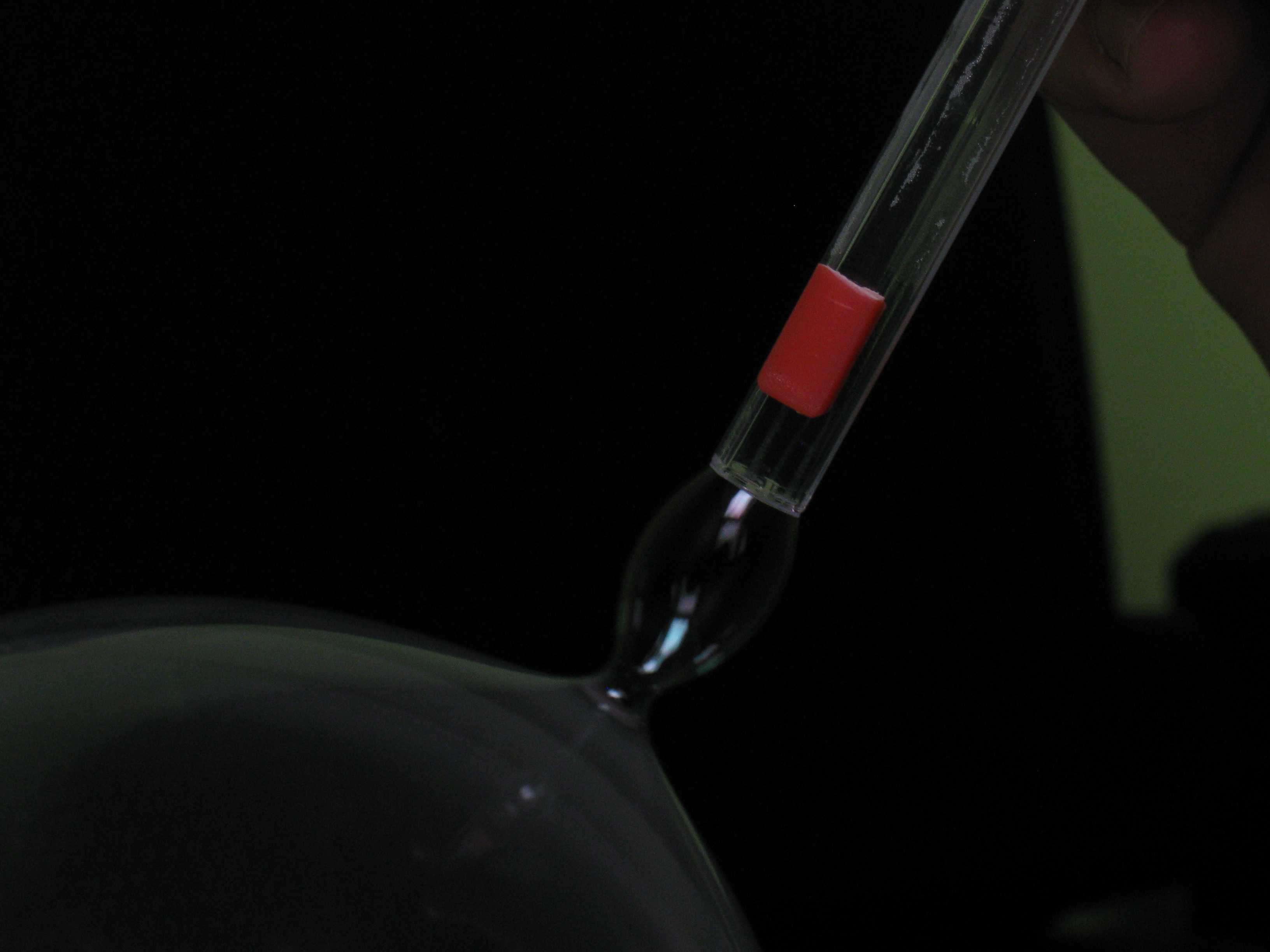
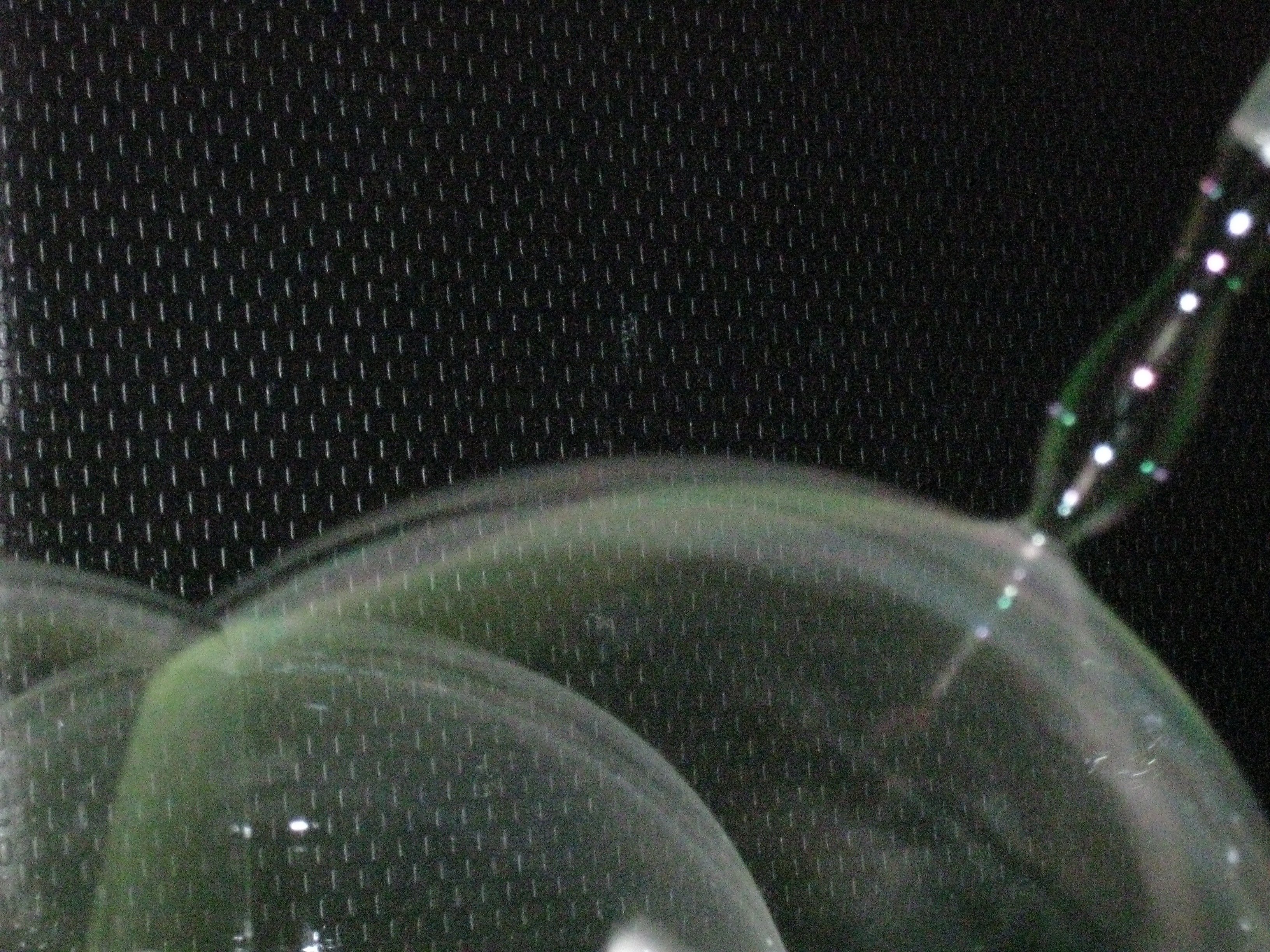
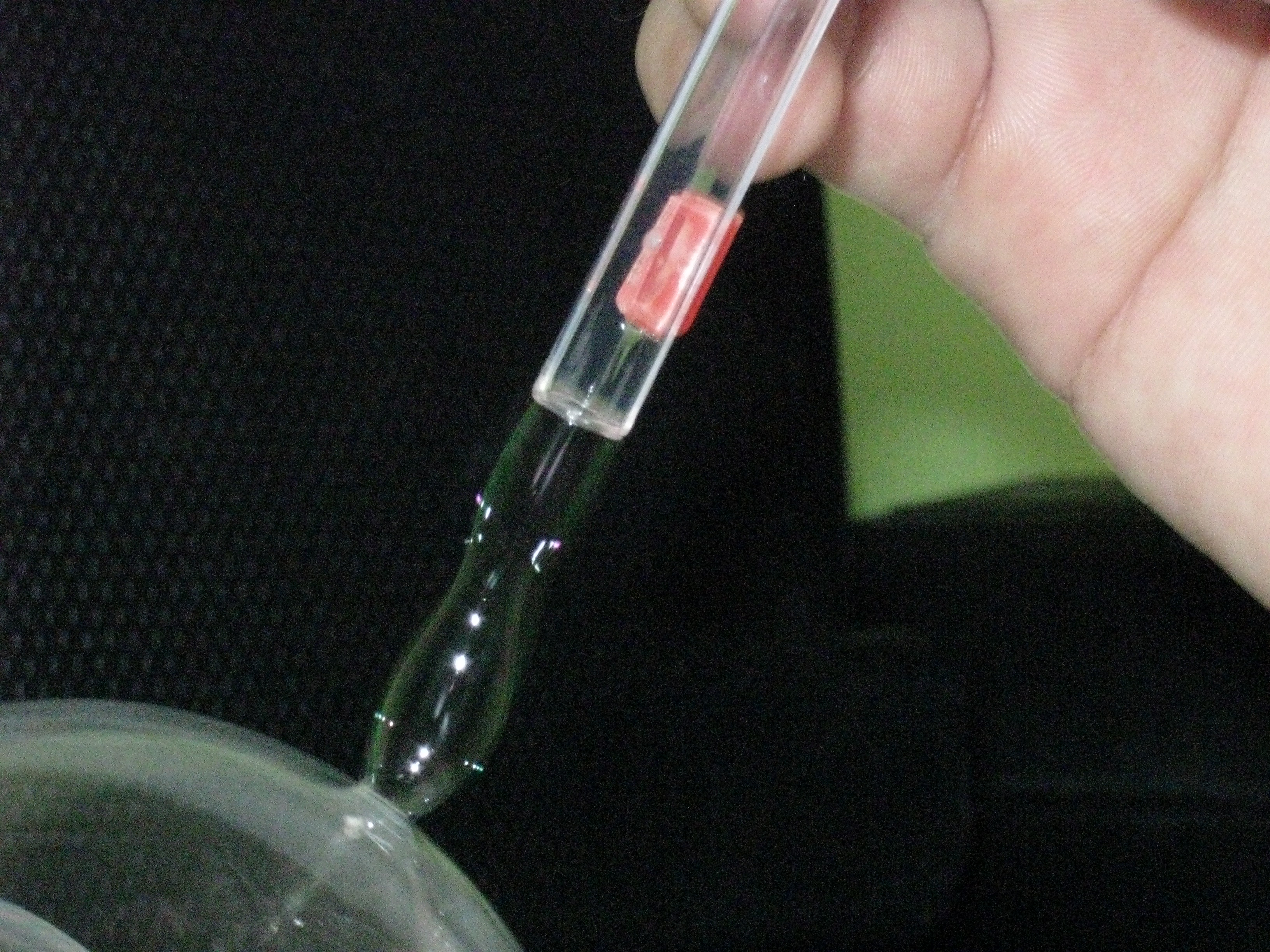
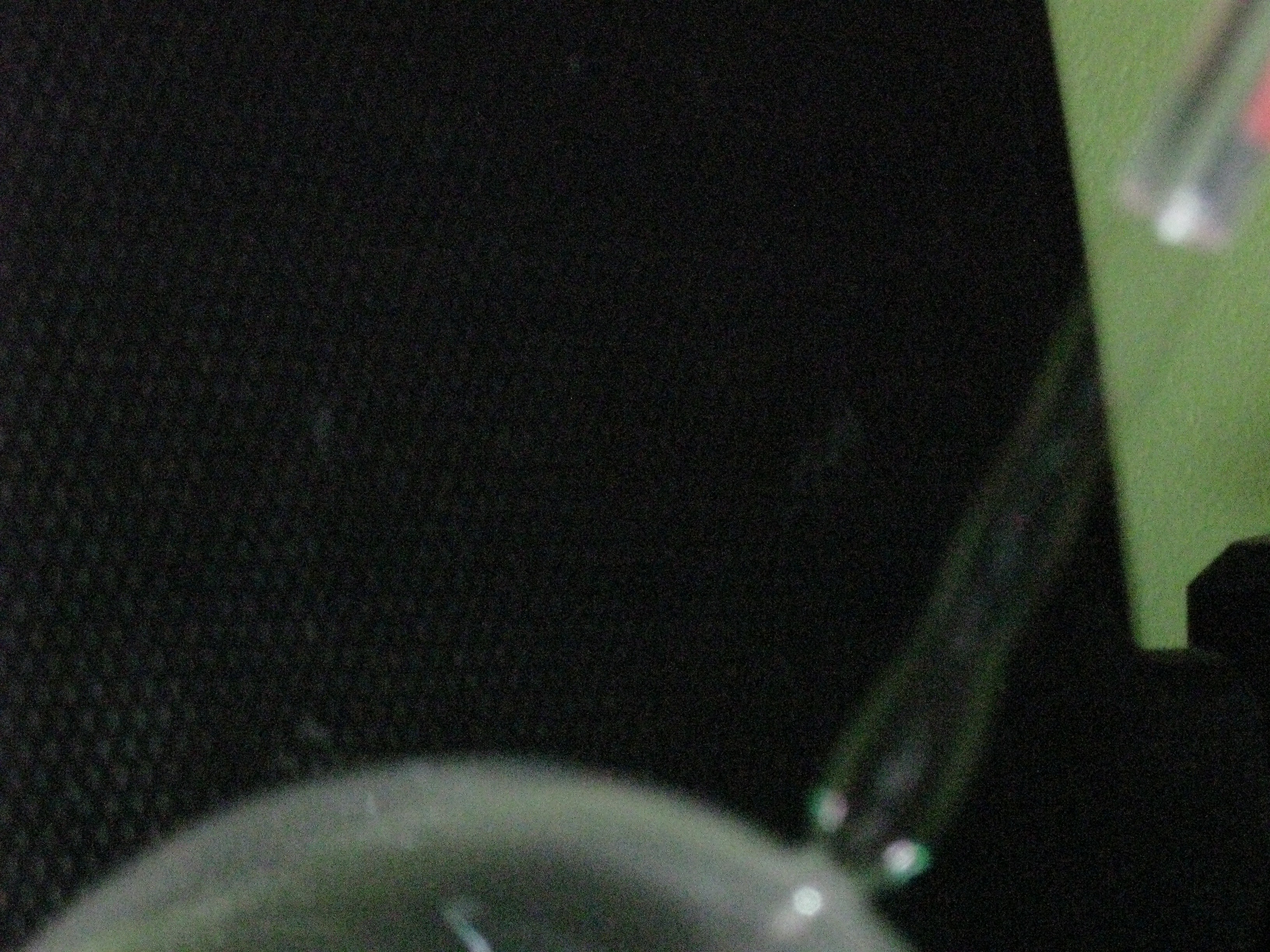
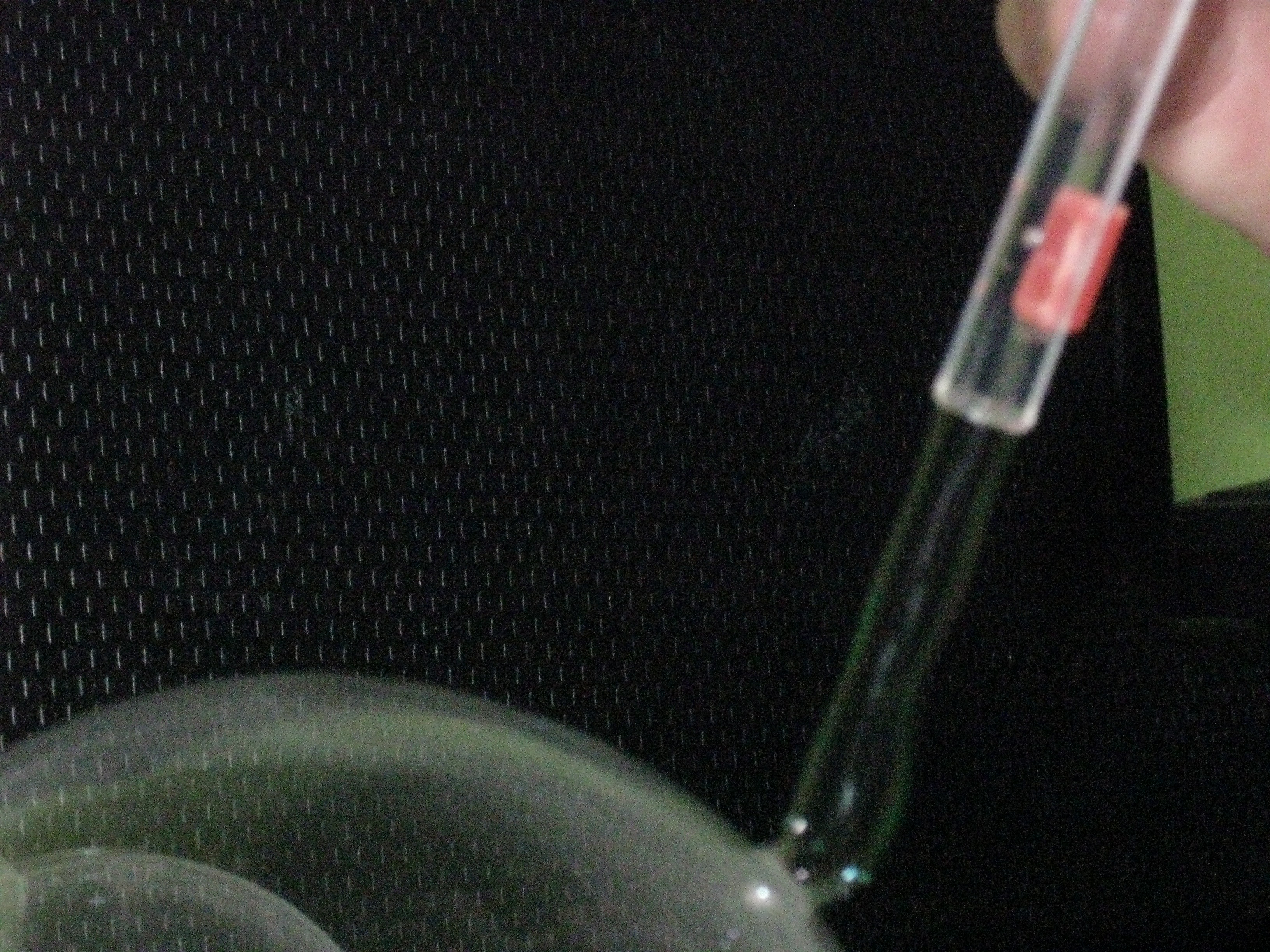
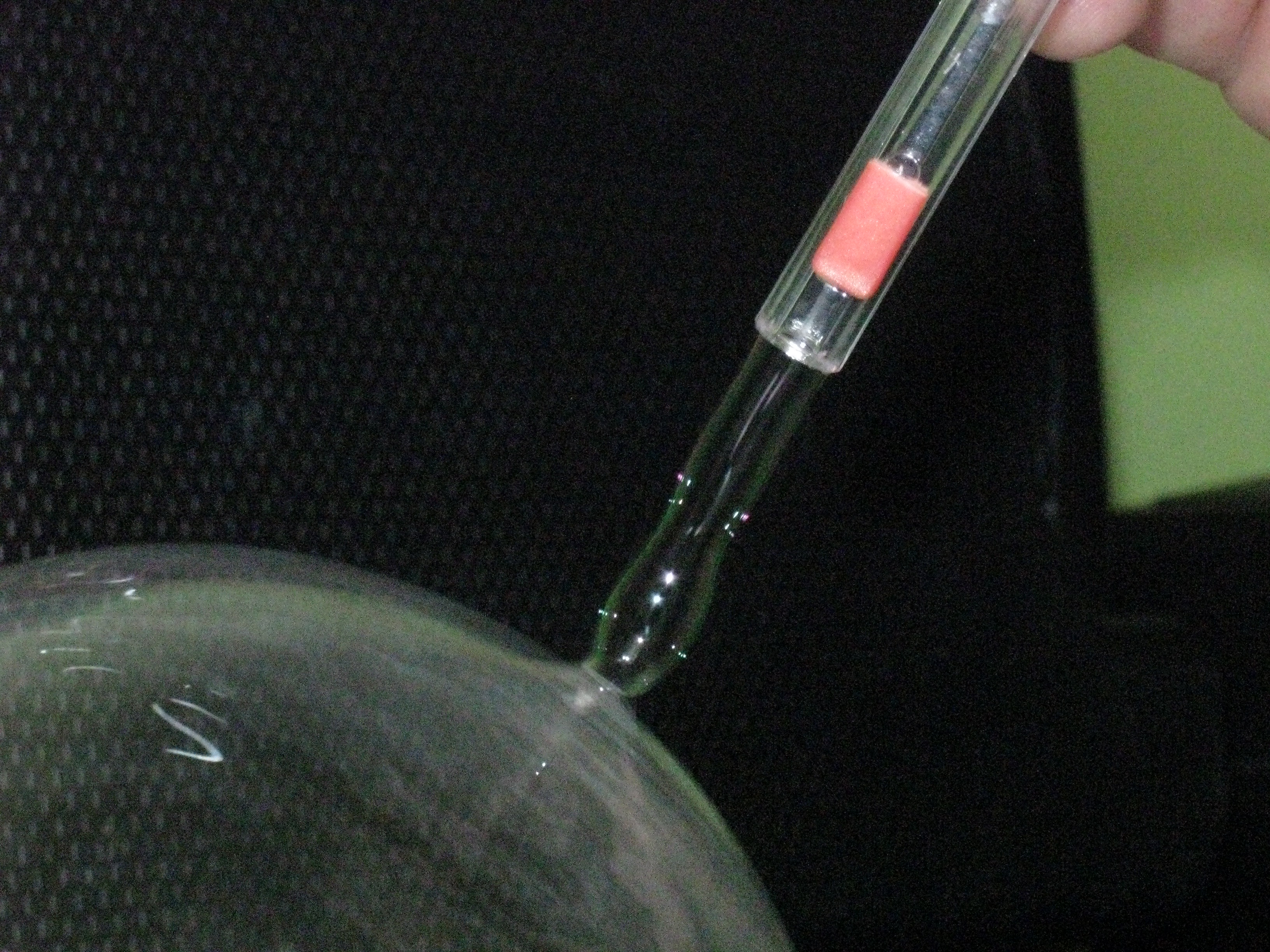
Add your name here if you'd like to become involved with the project:
* Lucas Morton